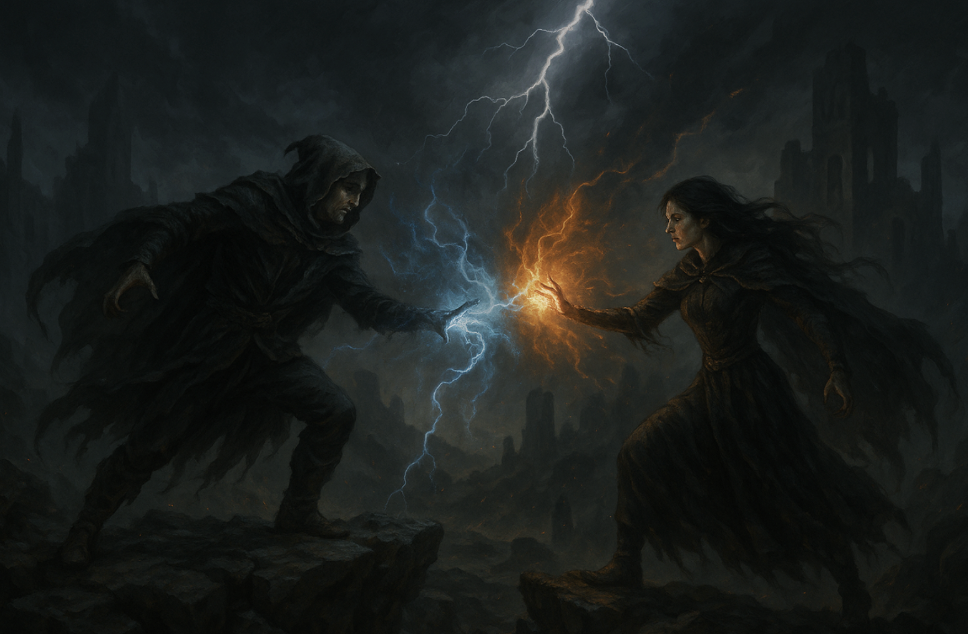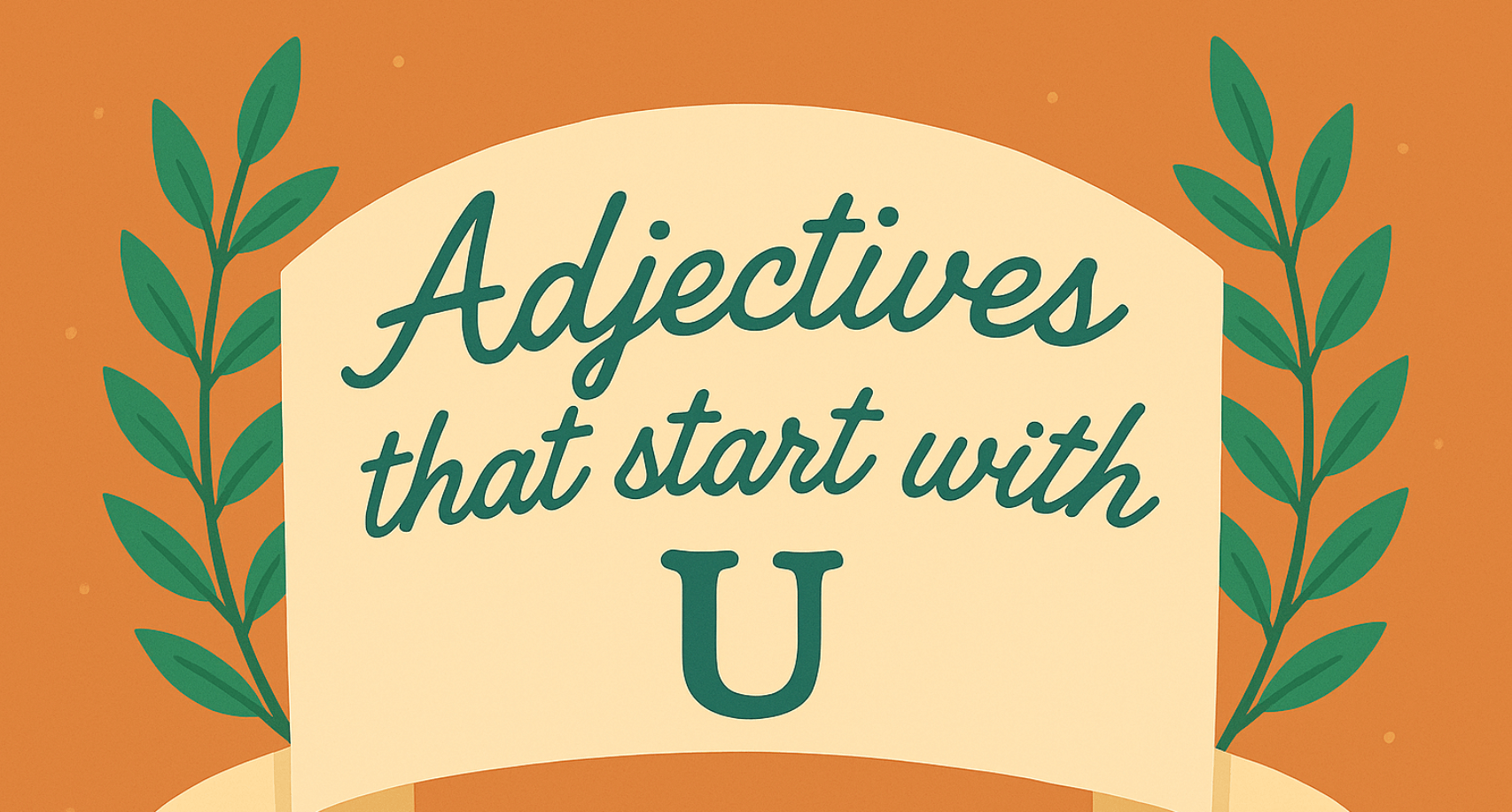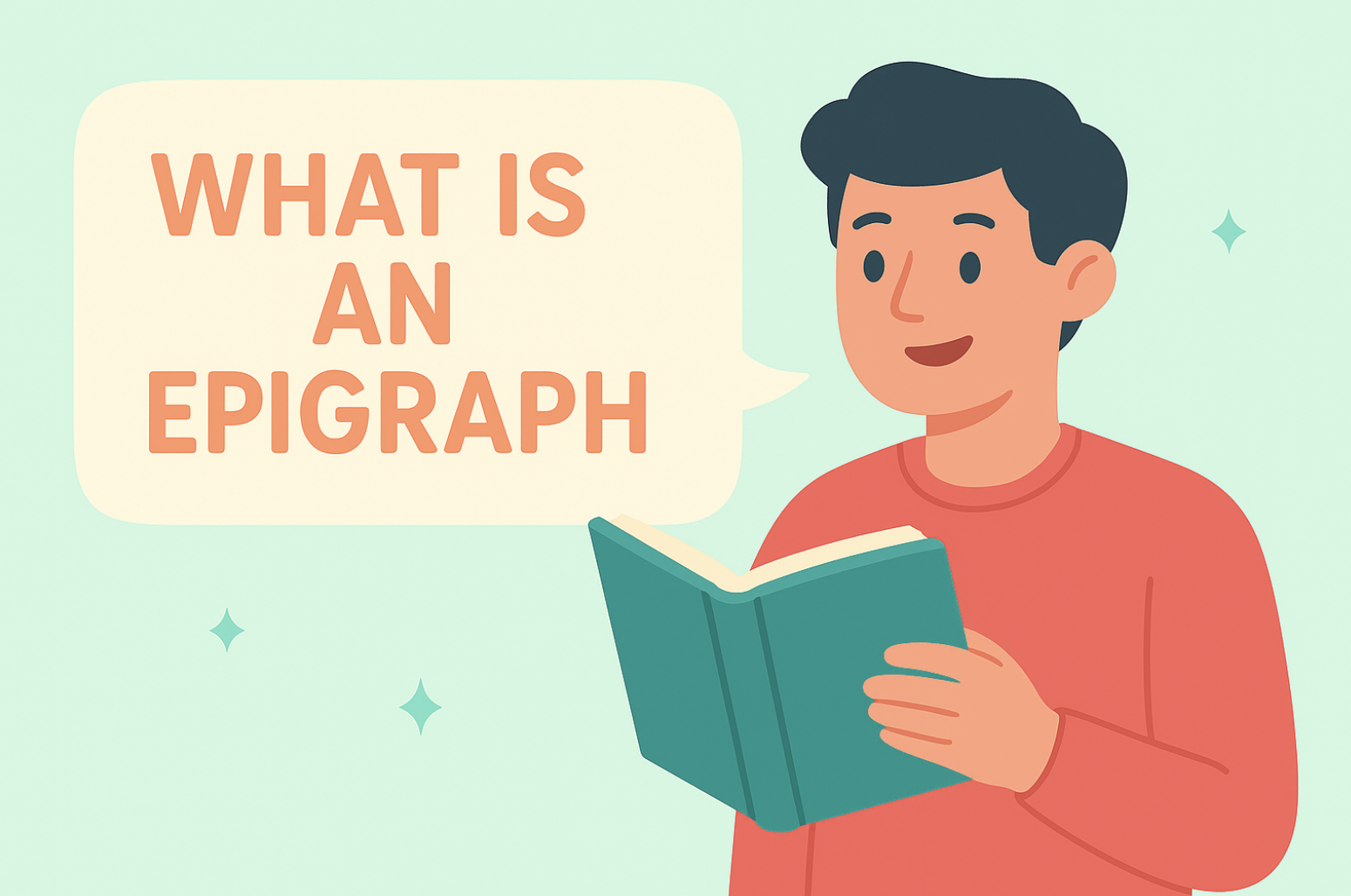What if your favorite fantasy story took a darker turn where the hero isn’t entirely good, the villain isn’t entirely wrong, and magic comes with a terrible cost? That’s the essence of dark fantasy. It takes the familiar comforts of traditional fantasy and twists them into something more haunting, more seductive, and far less predictable.
Unicorns and elves might still exist, but they roam cursed forests. Noble quests are replaced by dangerous bargains, and love is often tangled in tragedy. If you’ve ever craved magic with moral complexity or wondered what lies beyond the shining walls of a perfect kingdom, you’re not alone. Dark fantasy invites you to ask those questions—and to keep reading when the answers get uncomfortable.
So, what is dark fantasy? It’s not just about shadows and gloom. It’s a genre that blends the wonder of the fantastical with the dread of the unknown. In this guide, we’ll uncover its key elements, explore the allure of dark romance, spotlight essential reads, and help you craft your own story where beauty and terror walk hand in hand.
What Is Dark Fantasy? A Genre Born in the Twilight
Dark fantasy is what happens when the wonder of epic fantasy collides with the eerie atmosphere of horror fiction. Imagine Tolkien’s Middle-earth, but Sauron won the war—or at least gave Frodo a pretty convincing moral dilemma. It’s a genre that lives in the grey areas, where the line between hero and villain is as murky as a fog-choked graveyard.
So, what is the dark fantasy genre all about? At its core, it explores fantastical worlds that are tainted, often morally or magically. These are places where ancient evils stir beneath the surface, where protagonists are as likely to be anti-heroes as saviors, and where the happy ending is often just a less tragic one.
Unlike traditional high fantasy, which leans into themes of hope, valor, and destiny, dark fantasy embraces doubt, decay, and difficult choices. It also distances itself from pure horror by focusing less on jump scares and more on psychological dread and mythic tension. Think of it as horror’s poetic cousin and fantasy’s darker twin.
This genre invites readers to look into the abyss and sometimes fall in love with what they find there.
Your Publishing Journey Awaits – Start NowKey Themes and Tropes in Dark Fantasy
If dark fantasy were a cocktail, it’d be one part magic, one part menace, garnished with a twist of tragedy. What sets this genre apart isn’t just its brooding tone it’s the recurring presence of powerful themes and tropes that stir both fascination and dread. These stories dwell in the shadows between heroism and horror, and that tension is where their allure truly lies.
1. Moral Ambiguity
Forget shining armor and spotless ideals. Dark fantasy thrives on characters who must navigate murky moral waters. Protagonists often make ethically fraught decisions, not because they’re evil but because there’s no purely “good” path to take. Heroes may be assassins, outcasts, or cursed souls doing what they must to survive. Villains? They often present arguments that make unsettling sense. This ambiguity invites readers to question not just the story, but their own beliefs.
2. Corrupted and Decaying Worlds
These aren’t whimsical kingdoms or lands of light. Dark fantasy settings are bleak, often ravaged by centuries of war, blight, or corruption. Whether it’s a haunted forest, a crumbling city ruled by necromancers, or a realm under a blood moon’s curse, the world itself often feels like an antagonist. Magic is present, but rarely clean it’s found in forbidden books, cursed relics, and rituals that leave scars, physical or otherwise.
3. Tragic Quests and Cursed Characters
The road in dark fantasy stories is never just long it’s lined with ghosts. Quests are rarely victorious; instead, they’re filled with loss, sacrifice, and personal unraveling. Characters might be doomed from the start, carrying ancient bloodlines, prophetic burdens, or self-inflicted sins. Tragedy isn’t just a narrative endpoint it’s baked into the arc. While redemption can happen, it usually demands a steep price.
4. Supernatural Horror and Existential Dread
The monsters in dark fantasy aren’t just creatures they’re metaphors. Ghosts represent unresolved trauma. Demons reflect inner corruption. Ancient gods serve as reminders of humanity’s fragility and insignificance. These elements bring not just scares, but thematic weight, pushing readers to confront fear, loss, mortality, and the things we can’t or won’t understand.
Why It All Works
These tropes don’t exist for flair; they evoke emotion and challenge perspective. They make you sit with discomfort, yet keep you turning pages. Done right, dark fantasy doesn’t just entertain it lingers, like a dream you’re unsure was nightmare or revelation.
Dark Fantasy Romance: Love in the Shadows
Romance in dark fantasy isn’t candlelit dinners and love at first sight. It’s passion forged in the fire of survival, betrayal, and often, a touch of the supernatural. When hearts collide in these worlds, they do so under ominous skies, and the stakes are much higher than a broken heart.
So, what is dark fantasy romance exactly? It’s the intersection where love stories meet the eerie and the arcane. These romances are often tragic, intense, and emotionally raw. Instead of happily-ever-afters, you’re more likely to find lovers torn apart by curses, power struggles, or the slow unraveling of their humanity.
Hallmarks of Dark Fantasy Romance:
- Forbidden Love: Relationships that defy social, magical, or moral boundaries think mortals falling for immortals, knights in love with necromancers, or enemies bound by fate.
- Emotional Complexity: Characters may be emotionally scarred, morally grey, or entangled in conflicts that test their loyalty and desires.
- Tragic Beauty: Love doesn’t always conquer all. Often, it becomes the catalyst for sacrifice, transformation, or doom.
The best dark fantasy romances use intimacy not just for passion, but to explore vulnerability, control, trust, and transformation in deeply hostile worlds. These aren’t stories of perfection they’re stories of connection in chaos, and love that survives despite (or because of) the darkness.
How to Write Dark Fantasy That Captivates
Writing dark fantasy is like walking a razor’s edge between beauty and horror. You’re building a world that mesmerizes readers, then haunting it with shadows. But it’s not just about grim settings or tragic characters. Great dark fantasy is built on emotional resonance, moral complexity, and immersive world-building.
Start with a Flawed World
Your setting should feel lived-in, decaying, or cursed something that’s clearly past its golden age. Whether it’s a crumbling kingdom or a magical society corrupted by power, the world itself should reflect the genre’s darker themes.
Build Morally Complex Characters
Heroes in dark fantasy aren’t paragons they’re people struggling with inner demons, tough choices, and questionable pasts. The villain might be sympathetic. The protagonist might not always be right. That tension is what drives the story.
Weave in Horror Thoughtfully
Supernatural elements should enhance dread, not just jump out for shock value. Ghosts, curses, and ancient evils work best when they mirror deeper psychological or moral struggles.
Balance Romance with Ruin
If you’re writing dark fantasy romance, lean into emotional depth. Make the relationship serve a purpose: to reveal vulnerability, raise the stakes, or even threaten the characters’ very souls.
Avoid Overkill
Too much gloom can feel numbing. Let moments of tenderness, awe, or even bleak humor break through. These contrasts make the darkness more effective, and the story more human.
Writing dark fantasy is a dance with the abyss. Done well, it doesn’t just scare readers it stays with them, like a beautifully written nightmare.
Popular Books and Authors in the Dark Fantasy Realm
Dark fantasy isn’t a niche corner of speculative fiction it’s a thriving, evolving genre with a deep bench of talented authors and unforgettable stories. Whether drenched in gothic atmosphere, laced with horror, or rich in morally grey romance, these books demonstrate the genre’s vast potential.
Classic and Genre-Defining Voices
Clive Barker – Weaveworld, The Hellbound Heart
Barker’s work is surreal, grotesque, and poetic. He often blends mythological structures with deeply human fears. Weaveworld takes readers into a magical realm hidden within the folds of a carpet yes, literally while The Hellbound Heart introduced the Cenobites, blending sensuality with suffering in ways that redefined horror fantasy.
Anne Rice – The Vampire Chronicles
Dark fantasy and romance converge perfectly in Rice’s iconic series. Interview with the Vampire is more than just a vampire story it’s an exploration of immortality, isolation, guilt, and the complexities of love and power. Rice’s lush, baroque prose made her one of the genre’s most influential voices.
Michael Moorcock – Elric of Melniboné
Elric is the anti-Aragorn. Albino, sickly, addicted to magical potions, and bonded to a soul-eating sword, Elric’s tales are tragic, philosophical, and foundational to the “grimdark” fantasy subgenre.
Modern Masters of the Dark
Neil Gaiman – The Sandman, Neverwhere, Coraline
Gaiman’s strength lies in blending the ordinary with the uncanny. The Sandman explores dreams, death, and mythology in a sprawling narrative filled with morally complex characters. Even Coraline, a children’s book, is arguably dark fantasy at its finest blending charm and terror in equal measure.
V.E. Schwab – Shades of Magic, Addie LaRue
Schwab writes with a keen sense of character depth and atmosphere. Shades of Magic introduces parallel Londons one rich in magic, one magicless, and one corrupted by it. The Invisible Life of Addie LaRue is a slow-burning tale of a Faustian bargain and eternal loneliness, rich with dark romantic undertones.
Mark Lawrence – The Broken Empire Trilogy
Lawrence’s protagonist, Jorg Ancrath, is ruthless, philosophical, and deeply damaged. This series doesn’t pull punches and is a go-to example of grimdark fantasy done well. The mix of personal trauma, violence, and ambition paints a chilling but compelling picture.
Tamsyn Muir – The Locked Tomb Series
A newer addition to the canon, Muir’s work combines necromancy, gothic horror, space opera, and queer romance into a genre-blending, deeply emotional journey. Gideon and Harrow are some of the most memorable characters in modern fantasy.
Honorable Mentions Worth Exploring
- Tanith Lee With titles like The Birthgrave, her work is often surreal, sensual, and emotionally intense.
- George R.R. Martin A Song of Ice and Fire may be high fantasy, but its use of political decay, morally ambiguous characters, and grim outcomes places it squarely in dark fantasy territory.
- Naomi Novik – Uprooted A fairy-tale-inspired story with shadowy magic and a romance that’s as dark as it is haunting.
These authors don’t just tell stories they build intricate, unsettling, emotionally charged worlds that linger with the reader long after the final page. Whether you’re drawn to the psychological tension, the tragic beauty, or the shadowy romances, there’s a corner of dark fantasy out there that will speak to your soul quietly, in the dead of night.
Why Readers Love the Dark Side of Fantasy
Not everyone wants their fantasy served with rainbows and prophecies fulfilled. For many readers, the allure of dark fantasy lies in its willingness to explore what lies beneath the surface of worlds, of people, of the self. It doesn’t flinch from pain, corruption, or complexity. Instead, it leans in.
Emotional Depth and Psychological Realism
Dark fantasy characters aren’t invincible warriors or flawless heroes they’re broken, conflicted, and painfully real. This emotional vulnerability invites readers to connect more deeply, often finding reflections of their inner battles in the characters’ struggles.
Catharsis in Chaos
There’s something oddly comforting about watching someone survive a world far more brutal than our own. Dark fantasy lets us confront fear, trauma, grief, and loss in a controlled space, where we’re safe to feel things that real life sometimes doesn’t allow.
The Beauty of the Bleak
It’s not all despair. Dark fantasy often pairs its most disturbing moments with some of the most beautiful prose, emotionally rich scenes, and hauntingly vivid imagery. It’s a genre that finds elegance in decay and meaning in suffering.
Moral Complexity and Realism
The world isn’t black and white, and dark fantasy embraces that. It challenges readers to think critically, question motives, and understand that sometimes, there are no easy answers. This makes victories more satisfying and tragedies more poignant.
Readers don’t just want to escape they want to feel. Dark fantasy doesn’t shy away from the darkness it uses it to illuminate truths many genres are too polite to touch.
Conclusion: Embracing the Dark Magic
Dark fantasy isn’t just a genre it’s a journey into the beautiful, brutal, and bizarre. It’s where heroes bleed, love haunts, and magic corrupts. By blending the fantastical with the frightening, it speaks to our deepest fears and fiercest hopes in equal measure.
So, what is the dark fantasy genre, in the end? It’s the tale told in whispers around dying embers. It’s the story that acknowledges the monster under the bed and lets you ask it questions. Whether you’re drawn in by the twisted romances, morally grey characters, or the haunted worlds, dark fantasy offers something rare: truth dressed in shadows.
Whether you’re a reader ready to dive into cursed kingdoms or a writer itching to craft your tale of doomed love and dangerous power, the dark fantasy genre is waiting. Just remember—once you enter, you may never look at light the same way again.
FAQs – What Is Dark Fantasy
Q1: What is dark fantasy?
Dark fantasy is typically defined as a subgenre that blends elements of fantasy with horror, creating settings and stories filled with dread, danger, and moral ambiguity. It features supernatural elements like magic, mythical creatures, or ancient curses, but its tone is darker and more mature than traditional fantasy. These stories often focus on flawed characters, bleak worlds, and the corrupting nature of power.
Q2: What is dark fantasy romance?
Dark fantasy romance is where love and the macabre intertwine. These stories combine romantic plotlines with the eerie, twisted atmosphere of dark fantasy. Expect lovers cursed by fate, entangled with supernatural forces, or battling inner darkness. The romance is often intense and emotionally complex, sometimes tragic, and rarely fits the “happily ever after” mold.
Q3: Is Harry Potter considered dark fantasy?
While Harry Potter contains dark themes like death, prophecy, and soul-splitting it is generally categorized as urban fantasy or young adult fantasy. However, the later books, particularly The Half-Blood Prince and The Deathly Hallows, flirt with dark fantasy due to their deeper emotional tone and more disturbing magical elements.
Q4: What is the difference between light fantasy and dark fantasy?
Light fantasy typically emphasizes humor, hope, and heroism. Conflicts may be present, but they’re often toned down, and good tends to triumph over evil. Dark fantasy, on the other hand, focuses on complex moral dilemmas, unsettling atmospheres, and characters who often struggle with internal and external darkness. The tone is more serious, gritty, and emotionally intense.
Q5: Why is dark fantasy so good?
Dark fantasy resonates because it confronts uncomfortable truths. It offers readers catharsis, exploring themes like mortality, power, fear, and love in raw, unfiltered ways. The genre’s complexity, emotional depth, and high stakes make it both thought-provoking and deeply immersive. It appeals to those who want their fantasy to feel more real more human.
Q6: Is Game of Thrones dark fantasy?
Yes, Game of Thrones (or A Song of Ice and Fire) is widely considered dark fantasy. It features a grim world with political betrayal, moral ambiguity, supernatural threats, and often brutal consequences. The series explores how power corrupts and how even noble intentions can lead to tragedy, all hallmarks of dark fantasy.
Q7: What is the opposite of dark fantasy?
The opposite of dark fantasy is often referred to as high fantasy or light fantasy, depending on the context. Light fantasy focuses on whimsy, optimism, and clear distinctions between good and evil. It avoids the oppressive atmospheres and emotional weight found in dark fantasy, instead offering escapism and reassurance through hopeful resolutions.








